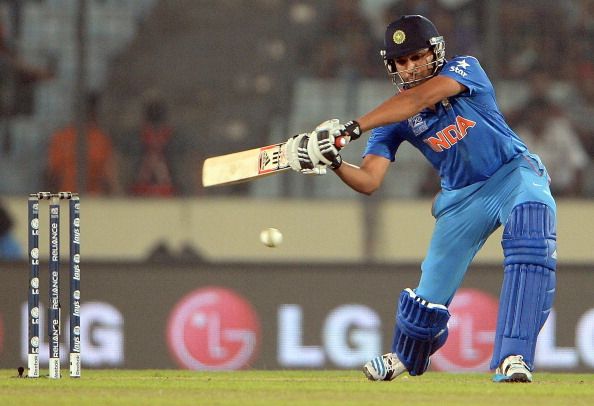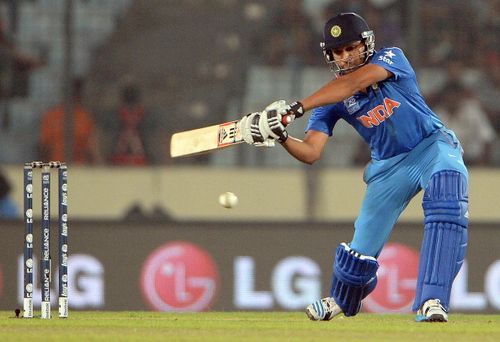
Tendulkar or Rohit or Sehwag - Whose ODI double hundred is the best?

Over the last four years, One Day International (ODI) cricket has witnessed multiple record-breaking events, which wouldn’t have been possible without the advent of the shortest format called Twenty20. While tall scores have become the norm, the recent rule changes have nearly taken the bowlers out of the equation – two new balls and even more fielding restrictions make it heavily loaded in favour of the batting side. No score is enough to earn a win – 300 plus targets are chased down with ease, the boundaries have become shorter, and nearly every batsman feels that hitting at least one delivery out of the stands makes you an instant hero (if it comes off).
Along the way, there have been four such instances where the record for the highest individual score in the 50-over format has been equalled, then broken, and now reset to an even higher level. Rohit Sharma’s Herculean effort at the Eden Gardens on Thursday is one such feat; not only does he again join an elite list of players who have set their own benchmarks at the individual level, he will also be immortalized in cricketing history as becoming the only player to hammer two ODI double centuries. The peerless Sachin Tendulkar and the buccaneering Virender Sehwag are the other two cricketers to have achieved the 200-run mark.
With such landmarks being set, the question of comparison inevitably arises: Whose knock is the best? As always, this is a difficult question to answer. I have my own analysis in place as well as my own choices, just like everyone else. However, I can provide some degree of justification as to why I prefer one innings over the rest.
Bowling attack on offer
I would rate the Proteas’ bowling attack higher than the Caribbean or the Sri Lankan ones. When Tendulkar crafted his masterpiece, it was done against the likes of Dale Steyn, Jacques Kallis, Charl Langeveldt and Wayne Parnell. Those who would respond by saying that Sri Lanka missed the wily Lasith Malinga are absolutely correct, but when a Rohit or a Sehwag is in the zone, reputations take a lot of solid hits. Outwitting Steyn’s thunderbolts takes a lot of skill and a bit of improvisation. How many batsmen in the world today can walk across the line and flick a searing, yorker-length delivery past midwicket for four? Only the Master.
It was the same case with the Australians when they faced off against India in Bangalore. I wouldn’t bracket Nathan Coulter-Nile in the same mould as Steyn, but Clint McKay is a mean bowler and has caused the Indians a lot of trouble in the past with his accuracy. James Faulkner, too, was getting the ball to move away from the right handers in that match. At least, the Kangaroos were trying their best to keep the score down to a gettable one; I didn’t see any such fight from either the Windies or the Lankans.
For reaching the coveted 200-run mark against a higher-quality bowling attack, I put the Mumbai maestro’s innings at the top.
The brutality factor
Now, this was a tricky unit of measurement for all the four knocks. While the veteran Indian opener’s performance against South Africa had a much more refined level of aggression, Sehwag’s effort was at his usual level of brutality. This was around the time that Sunil Narine was coming into his own as a mystery spinner, and the puzzles he posed with his bag of tricks had yet to be completely deciphered. The Nawab of Najafgarh pulled out all the stops to decimate the young bowler’s figures and caned the Caribbean bowling so viciously that they were scurrying for cover all the time.
However, Rohit’s blitzkrieg 209 puts his swashbuckling senior’s knock into shade. I cannot remember a more skewed contest between bat and ball in recent times, not even Shane Watson’s hurricane 185 against Bangladesh comes close. There was so much power behind every shot that even the disciplined McKay was struck for boundaries all over the park. Carnage ensued as he completely annihilated Xavier Doherty and the charismatic Glenn Maxwell, targeting the shorter leg-side area of the ground. Shots increasing in power and brutality, and outmatching his skipper MS Dhoni’s free-flowing style, cascaded from his blade as the Mumbai batsman made a complete mockery of the four-time ODI world champions.
His effort at Kolkata on Thursday was brutal, as well, but for the sheer level of carnage and mayhem that ensued in Bengaluru, Rohit’s first double stands out above the rest.
Number of boundaries hit and the strike-rates
Any analysis must be supported with figures, and this particular parameter has been chosen for exactly the same purpose. Let me break it down into two aspects: the number of boundaries (fours and sixes) struck by each batsman during their legendary innings and the strike-rates they commanded.
In terms of the former, the 264-run marathon stands out above all. Hitting forty-two boundaries in a 50-over game, when you’re out in the middle from the moment play is called requires a lot of physical effort and stamina. The same innings gets the nod in terms of strike-rate, as well – 152.6 is a number that not even Viv Richards, at the height of his powers, could have achieved back in his day.
Going by similar logic, Sehwag’s 219 takes second spot (32 boundaries at 146.97), followed by Tendulkar’s achievement (28 boundaries with a strike-rate of 136.05). The Hitman’s first of the two doubles that earned him a birth in the Elite 200 club rounds off the list with 28 boundaries at 132.27.
Fluency in stroke-making
I prefer to see brutal hitting when a batsman is completely in the zone. I also enjoy viewing the level of control he exhibits over both his own art as well as on the opposition bowlers. Combining both these traits gives rise to something that is extremely rare among the younger willow wielders of today, and only a select few gifted ones have this rare ability: producing fluent shots all over the park, almost at will.
In the context of the set of four double centuries, Gwalior knock would come first in terms of this characteristic. Everyone knows how Tendulkar’s boyhood coach Ramakant Achrekar would get him to play at different grounds, under different scenarios and on different pitches. Towards the end of his illustrious career, the great man displayed the tenets of his mentor’s decision by adopting a blended strategy of dominating the rival attacks with accurate placements, immaculate timing and swift running between the wickets. It was vintage stuff – the trademark flick past the square-leg umpire, the backfoot punch down the ground, and the cheeky stroke he played off a Steyn missile in the batting Powerplay.
I won’t take anything away from the other three 200-plus efforts, but, to me, the fluency of shot-making is every bit as important as the power behind them. Sehwag isn’t the most refined of stroke-players, and Rohit’s innings on Thursday and at Bengaluru featured plenty of mishits that would have resulted in his downfall on any other day. In this case, Tendulkar wins hands down.
The luck factor
In order to play an innings that will go down in the annals of cricketing folklore, you need to have a bit of luck going your way. Dropped catches, missed run-out chances, batsman-friendly decisions – we have seen everything belonging to these categories time after time, game after game. Three of the most memorable double centuries were, in fact, peppered with such chances.
At Kolkata, Rohit was the beneficiary of a multitude of dropped chances. In the replays of each of those chances, I thought he mistimed quite a few shots. The edge that Eranga drew from him in the fifth over was spilled at third man, and he was put down by Seekkuge Prasanna as well soon after reaching his double. He received a similar reprieve at Bengaluru, while Sehwag also had the benefit of surviving the simplest of chances at Indore. The rest, as is oft said, is history.
Even in this case, Sachincredible (a term coined by the legendary Shane Warne for his illustrious nemesis) triumphs over the other two. Not once did he offer a ghost of an opening to the hapless Proteas, consigning them to misery with his wizardry. Deftly manoeuvering the ball through the lake of green jerseys on the field, pacing his innings with all the skill of a gifted craftsman and unfurling the big shots when required, the flawless, epic 200-run effort at the Captain Roop Singh stadium gains the top spot in my book.
Tendulkar’s double takes the cake
In reference to the analysis above, the best ODI double hundred would have to be Tendulkar’s knock at Gwalior in 2010. There will be counter-arguments to this, but the sheer fluency in his shots and the fact that he never offered a single chance to any of the opposition members makes it even more special. At 36, when an international sportsman’s career is supposed to be on the wane, the Little Master conjured an innings of controlled aggression and rock-solid determination, which turned to be even better than an all-out mayhem. His landmark may have been relegated to fourth on the list of the all-time highest individual ODI scores, but it loses none of its lustre, and neither will the other three, for eons to come.
Have your say: